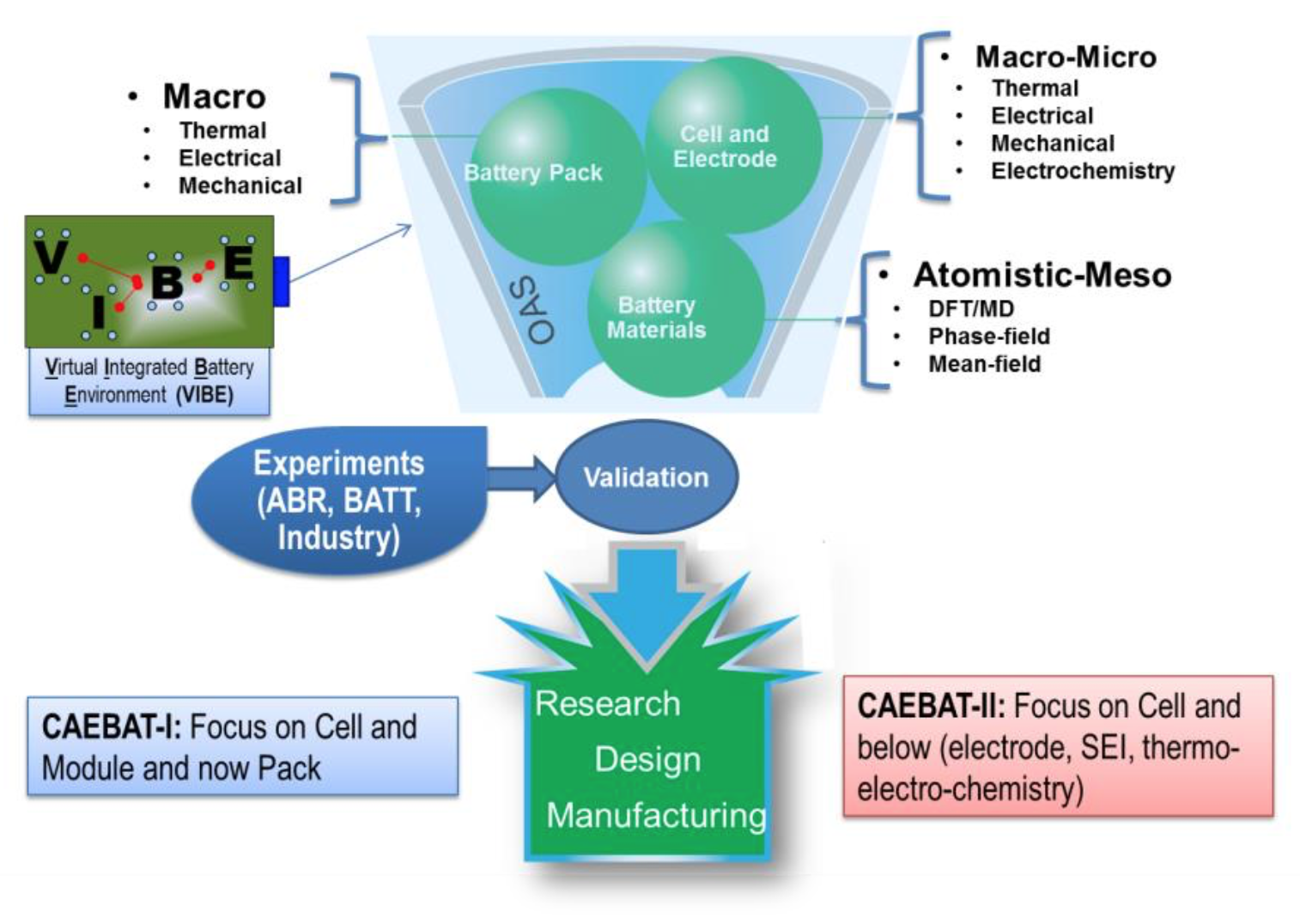About
As part of the CAEBAT (Computer Aided Engineering for Batteries) activities, ORNL developed a flexible, robust, and computationally scalable open-architecture framework that integrates multi-physics and multi- scale battery models. The physics phenomena of interest include charge and thermal transport, electrochemical reactions, and mechanical stresses. They operate and interact across the porous 3D structure of the electrodes (cathodes and anodes), the solid or liquid electrolyte system and the other battery components. The underlying lower-length processes are accounted for through closure equations and sub- models that are based on resolved quantities.

This framework enables seamless integration of the following physical phenomena that are necessary for development of realistic and predictive battery performance and safety models:
Mass Transport
- Lithium/electron transport through cathode, anode and electrolyte materials
- Spatiotemporal variations in material properties
Thermal Transport
- Thermal transport through various battery materials as a function of space and time
Electrochemistry
- Primary and secondary reactions
- Interfacial reactions
Mechanical behavior
- Linear and nonlinear mechanics
- Stress/strain relationships
- Fracture at primary and secondary particle levels
The objective of the project is to develop a mathematical and computational infrastructure, and modeling framework that will enable seamless multi-scale and multi-physics simulations of battery performance and safety. The modeling framework will transfer the information between models in a physically consistent and mathematically rigorous fashion for both spatial and temporal variations. The end result will be a verified, computationally scalable, portable, and flexible (extensible and easily-modified) framework that can integrate models from the other CAEBAT tasks and industrial partners. The framework will be used to validate models and modeling approaches against experiments and to support rapid prototyping of advanced battery concepts. The image below shows different parts of CAEBAT VIBE simulation environment that work together to provide user with flexibility in the problem setup, solution formulation and simulation launch.
